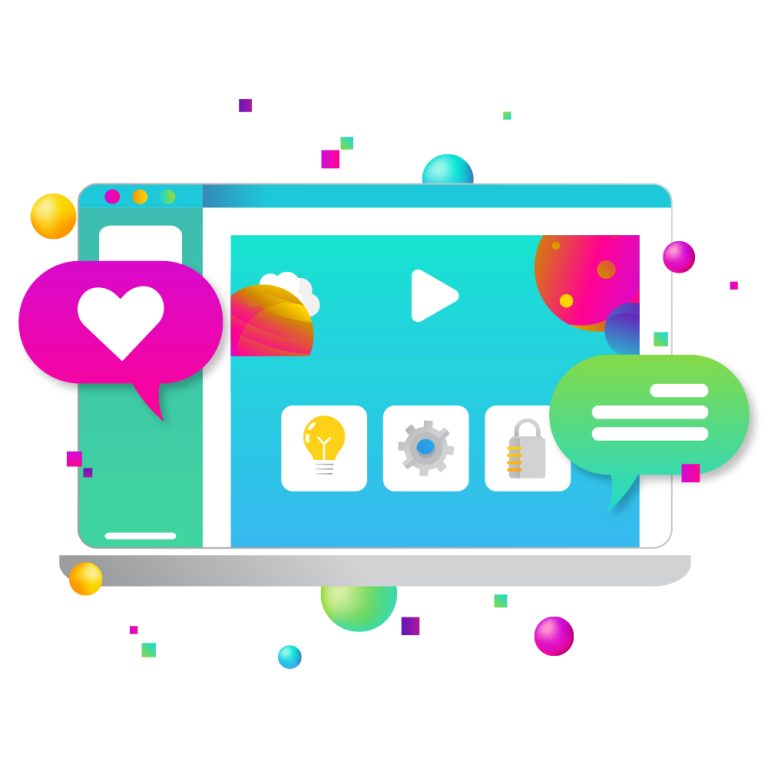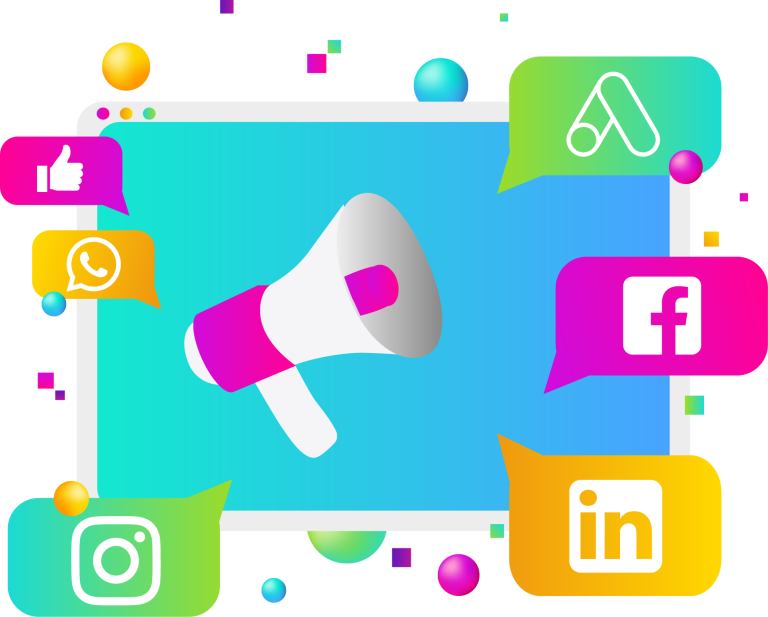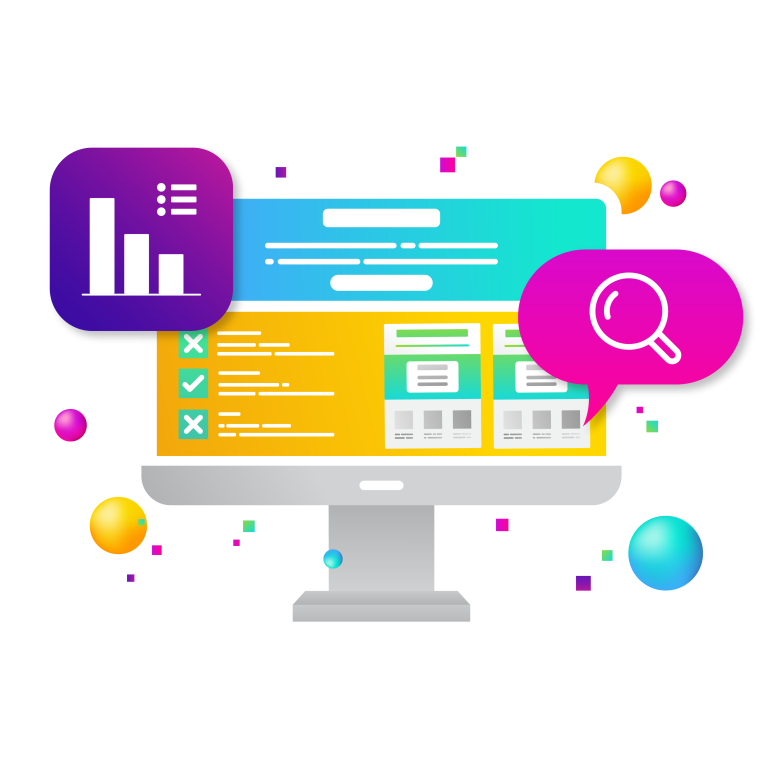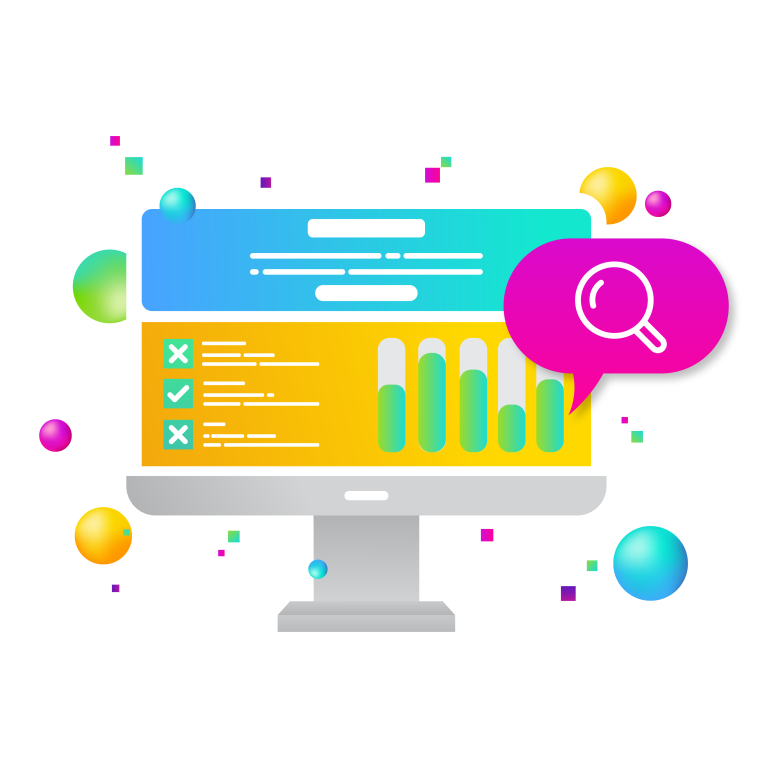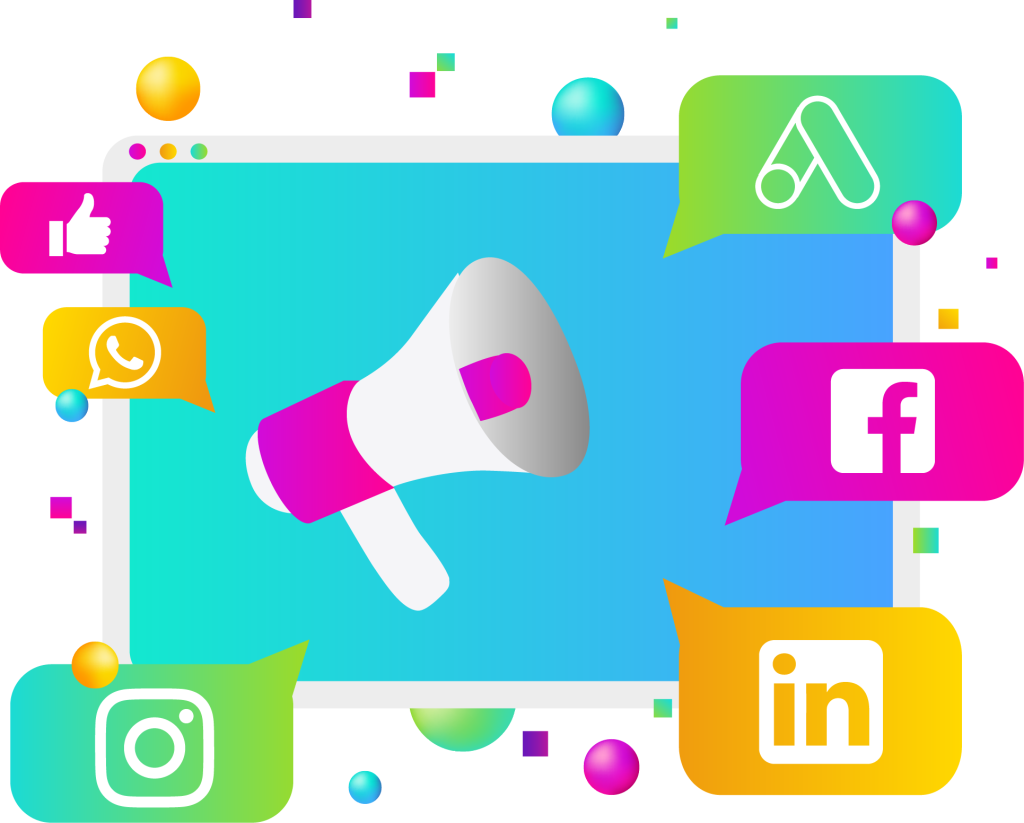
Small local organizations – whether nonprofit or for-profit – often have to make every marketing dollar count. Choosing Facebook vs LinkedIn ads can significantly impact the success of your digital campaigns. Both platforms offer powerful tools, but they differ in audience, cost, and best-use scenarios.
Facebook vs LinkedIn: Understanding the Audience and Reach
Facebook’s Broad Community Reach
Facebook boasts over 3 billion monthly active users globally, cutting across a wide range of ages and interests. Its largest user segment is adults 25–34 (about 31% of users), but importantly for local organizations, Facebook usage spans from teens up to seniors. This means your local community – donors, customers, volunteers, families – are likely on Facebook. Users spend around half an hour per day on the platform on average, often browsing casually for personal updates, local news, and events.
Facebook’s audience is highly diversified, giving you a massive pool to reach. The platform’s sophisticated targeting can filter this broad audience by location, demographics, interests, and behaviors, so you can zero in on people most likely to engage with your cause or business. For example, you can target an ad to users within 10 miles of your city who “like” charity causes or who fit the profile of your typical customer. This breadth and granularity make Facebook ideal for campaigns aiming to reach a wide local audience or community segment.
LinkedIn’s Professional Network
LinkedIn, while smaller in total users, is the go-to social network for professionals and organizations. It has about 1 billion registered members (roughly 310 million monthly active users as of 2025). Its user base skews toward working professionals, with the majority in the 25–34 age range. Notably, LinkedIn’s audience tends to have higher income and education levels – about 53% of users come from high-income households – making it a prime channel to reach decision-makers and affluent supporters.
People use LinkedIn in a business-minded context: networking, industry news, and career development. For a local organization, this means LinkedIn is best for reaching professional demographics in your area – for instance, local business owners, corporate managers, or specialists in certain industries.
The platform’s targeting options reflect this professional focus. You can target ads by parameters like job title, company industry, company size, skills, or seniority level, rather than personal interests. This precision lets you tailor ads to exactly the audience who fits your campaign’s profile on a professional level. In other words, LinkedIn can ensure your message reaches people with the right job roles or expertise – e.g. an ad about a nonprofit fundraising gala can be shown specifically to CEOs, finance directors, or philanthropic officers at companies in your region.
The trade-off is that LinkedIn’s overall audience size is smaller and more niche than Facebook’s. If your target market is the general public or a broad local community, LinkedIn will inherently reach fewer of those people. But if your target is specific professionals or businesses, LinkedIn offers a highly qualified audience concentrated in that space.
In fact, LinkedIn is often cited as the top social platform for B2B marketing and lead generation, and it accounts for 80% of B2B social media leads according to one analysis. The key is to match your audience targeting to the strengths of each network: Facebook for broad consumer reach, LinkedIn for narrow professional reach.
Geo-Targeting Local Audiences
Both Facebook and LinkedIn allow location-based targeting, which is crucial for local organizations. You can serve ads to users in a specific city, ZIP code, or radius on both platforms. However, consider the context: someone scrolling Facebook might be in a casual mindset and open to discovering a local event or small business. In contrast, a LinkedIn user might notice a local initiative if it’s professionally relevant (e.g. a city chamber of commerce event or a nonprofit seeking skilled volunteers).
In practice, a community festival or a charity fun-run will likely gain more traction on Facebook, whereas a networking breakfast for local entrepreneurs could find the right eyeballs on LinkedIn. Facebook’s larger daily active user base means you can accumulate impressions quickly for a local campaign. LinkedIn’s users might not log in daily (many visit a few times a week), but when they do, they’re in a mindset to learn about professional or community leadership opportunities.
Keep these differences in mind as you choose your platform: who are you trying to reach, and where are those people more likely to engage with your message?
Facebook vs LinkedIn: Campaign Objectives
Your campaign’s goal – whether it’s raising funds, building awareness, promoting an event, or generating leads – will influence which platform is the better fit. Here’s a breakdown of common objectives and how Facebook vs LinkedIn Ads align with them:
Driving Donations and Fundraising
If you are a nonprofit or fundraising for a cause, Facebook often has the upper hand for reaching individual donors. Its broad user base means you can appeal to the general public’s goodwill. Facebook even provides a built-in donation feature on its ads and pages, allowing people to donate with a few clicks without leaving the platform. Using these tools, small nonprofits have run highly successful Facebook campaigns.
LinkedIn, on the other hand, is less commonly used for mass-donation appeals (only about 17% of nonprofits report using LinkedIn Ads, partly due to cost). However, LinkedIn can be powerful for reaching high-value donors or corporate sponsors. You might use LinkedIn to target local executives or professionals passionate about your cause – an audience that might not respond to a generic Facebook ad but would to a professional outreach.
Some nonprofits have leveraged LinkedIn to forge partnerships and even secure large grants; for instance, consultants report their nonprofit clients have connected with influential donors on LinkedIn, leading to meetings for multimillion-dollar grants. In short, Facebook is typically better for broad-based fundraising drives and community giving, whereas LinkedIn can help you network with business leaders or major donors who can support your organization in a big way. If budget allows, a nonprofit might do both: run a Facebook campaign for public donations and a smaller LinkedIn campaign targeting local business owners for sponsorships.
Local Brand Awareness and Community Engagement
For a small local business or community organization looking to get their name out there, Facebook is usually the first choice. Its News Feed environment is well-suited to storytelling and visual content that can humanize your brand. Facebook Ads (including Instagram placements under the same platform) excel at brand awareness because they can reach a large volume of people cheaply and repeatedly. You can use engaging images or videos to introduce your organization, then encourage likes, shares, or follows to build a local following.
LinkedIn is less of a “general awareness” platform; people don’t browse LinkedIn to discover local shops or community groups, so brand campaigns on LinkedIn should have a professional spin. That said, if your organization’s brand is tied to professional services or thought leadership (say you’re a local consulting firm, a B2B service provider, or even a nonprofit wanting to establish authority in a field), LinkedIn Ads can raise awareness in a targeted professional circle.
You might promote informative content (e.g. a whitepaper, an article, or an introduction to your services) to users in relevant industries. LinkedIn’s Sponsored Content format allows your posts to appear in the feed in a way that blends with professional updates.
Brands have seen lifts in perception through LinkedIn; for example, 84% of B2B marketers say LinkedIn delivers good value for their marketing efforts, higher than other platforms. For a local agency or B2B startup, a small LinkedIn ad push could put your name in front of the exact people you want to know about you (like CEOs of local firms), even if the reach is modest. In summary, use Facebook for broad local brand awareness (it remains the world’s biggest social media platform and a go-to for consumers) and use LinkedIn to build credibility with a more focused, professional audience.
Event Promotion
Both platforms can be useful for promoting events but consider the nature of your event. Community events, public workshops, charity drives, or store grand openings tend to perform better on Facebook. Facebook’s culture of events (people often create and share Facebook Event pages) and its social sharing can lead to organic spread. An eye-catching Facebook ad for your event – perhaps with an “Interested/Going” RSVP button – can get traction through friends of people who respond.
For example, a nonprofit might advertise its upcoming charity 5K run on Facebook targeting all residents of the city; locals who see it can easily mark that they’re interested, share with friends, or click through to register. Facebook also allows you to retarget people who showed interest in the Event with follow-up ads (like a reminder to actually register or donate).
LinkedIn events, by contrast, are typically oriented toward professional gatherings: networking events, webinars, conferences, fundraisers with business sponsors, etc. If your local event is, say, a professional seminar, a recruitment fair, or a fundraiser dinner aimed at corporate partners, LinkedIn could be very effective. You can target ads to members of certain LinkedIn Groups (e.g. local industry groups) or by job titles to reach the folks who would value the event’s content.
LinkedIn Sponsored InMail (now often called Message Ads) is also a unique format: you can send a personalized invitation directly to users’ LinkedIn inboxes. A small organization could use this to invite local business leaders to an event (it feels more personal than a feed ad). Keep in mind LinkedIn’s smaller reach; you may not get thousands of RSVPs, but you might get the right attendees.
In summary: use Facebook Ads to drive maximum turnout for public-facing events and use LinkedIn Ads to target specific attendees for professional events or to encourage corporate participation in your local event.
Lead Generation and Sales (Especially B2B)
If your objective is to generate leads (contact sign-ups, inquiries, or sales leads), the choice may hinge on whether you’re B2C or B2B. For consumer-facing leads or sales (like a local gym seeking new members or an online shop selling to the public), Facebook’s broad reach and lower cost will generally yield more leads per dollar. Facebook offers Lead Ads that let users submit their info in a form without leaving Facebook, which is great for small teams because you can quickly gather sign-ups for a newsletter, a coupon, or a free consultation.
Many small businesses have grown their customer base this way. One tech startup even used Facebook to successfully drive B2B leads: a tech company carefully targeted Facebook ads to people by industry and job title, and used Facebook’s built-in lead form to capture info, resulting in a significant uptick in qualified leads and sales. This shows Facebook can work for B2B leads too, especially if you leverage interest-based targeting (e.g. targeting users who have shown interest in business software, or who follow industry publications on Facebook).
LinkedIn Ads, however, are purpose-built for B2B lead generation. LinkedIn’s ability to target decision-makers at companies is unmatched – this is why LinkedIn is credited with driving the majority of B2B social media leads. For example, if you’re a local marketing consultant wanting to sign clients, you can run LinkedIn ads targeting “Owners” or “Marketing Directors” of companies in your region. The leads you get are likely to be highly relevant because you reached exactly who you intended.
The platform also offers Lead Gen Forms similar to Facebook’s, which auto-fill a user’s contact info from their profile – this convenience can boost form completion rates.
This kind of depth is LinkedIn’s strength: you might pay more per lead, but those leads often have higher intent or value (LinkedIn members have 2x the buying power of the average web audience). If your local organization is selling services to other businesses or recruiting volunteers with specific skills, LinkedIn can deliver quality over quantity.
Meanwhile, Facebook will deliver volume and is excellent for B2C lead gen or e-commerce sales, where casting a wider net is beneficial. Many organizations use a combination strategy: for example, attract a broad set of leads via Facebook, then re-target or nurture the most promising ones on LinkedIn, or vice versa. If you have a very limited budget and need leads, a practical tip is to start with Facebook (to learn cheaply what kind of messaging works) and then consider testing LinkedIn with a refined approach.
Facebook vs LinkedIn Ads: Cost-Effectiveness and Budget Considerations
For small organizations with tight budgets, cost-effectiveness is a critical factor. In general, Facebook Ads are much more affordable than LinkedIn Ads on a per-click or per-impression basis. The average cost-per-click (CPC) on LinkedIn is over five times higher than on Facebook. One analysis put the average CPC around $5.26 on LinkedIn versus about $0.97 on Facebook. We’ve seen this in practice: LinkedIn’s CPCs can often range from $4–$8 (or more) depending on your target audience, whereas Facebook might be well under $1 for many local campaigns.
What does this mean for a small org? Simply that $100 of ad spend will go much further on Facebook in terms of eyeballs and clicks – you might get, say, 100–200 clicks on a Facebook ad vs. perhaps 15–20 clicks on LinkedIn for the same spend, assuming those average CPCs.
If your goal is maximizing reach or engagement, Facebook gives you more bang for your buck. One PPC expert quipped that a very small budget on LinkedIn can vanish quickly (“LinkedIn alone will swallow up that amount in a day! CPCs on LinkedIn are insane” in the low-budget context). While a bit exaggerated, it underscores that LinkedIn often requires a higher investment to see meaningful results.
However, cost-effectiveness isn’t just about the sticker price per click – it’s about the value of outcomes. LinkedIn’s higher costs come from the fact that you are accessing a more specialized audience of professionals. If one of those 15 LinkedIn clicks turns into a major client, partner, or donor, the ROI could dwarf that of cheaper Facebook clicks. It’s not unheard of for a single LinkedIn ad lead to lead to a contract worth tens of thousands of dollars in B2B contexts. So, the question to ask is: What outcome do I need, and can I realistically get that outcome on this platform with my budget?
If you’re a local charity trying to get many small $10 donations, paying $5 per click on LinkedIn would clearly not be cost-effective – Facebook’s lower-cost reach to the general public would net you far more donations. By contrast, if you’re a consultant seeking a $5,000 contract, spending $50 to get a few LinkedIn clicks from CEOs in your area could be a smart gamble.
Another angle to consider is competition and ad efficiency. Facebook’s ad inventory is huge, but so is the number of advertisers; you may need to optimize your ads (good imagery, compelling copy) to keep your costs low amid competition. LinkedIn has fewer total advertisers (especially in the nonprofit space, as noted, which can mean less competition for those ad slots), but the audience is also smaller, so you can’t scale as easily.
LinkedIn often requires a higher minimum budget to be effective – for example, LinkedIn recommends having an audience of at least ~50,000 members for Sponsored Content campaigns. In a small local area or niche targeting, hitting that size can be challenging, which means LinkedIn might show your ad less frequently or charge more per impression if your target is too narrow. Facebook is generally more forgiving with small audiences (you can target a few thousand people in a town and still run a campaign).
Setting a Budget
If you have a limited budget (e.g., $500 or less for a campaign), you’ll typically see more immediate results from Facebook Ads due to the lower CPC and CPM (cost per thousand impressions). For instance, an $50 ad boost on Facebook can often reach thousands of people in your town, whereas on LinkedIn $50 might not even accumulate enough clicks to generate a lead. One marketing blog flatly stated: If you want serious leads and are ready to pay the price, use LinkedIn; if you need to reach a wider audience on a tight budget, use Facebook.
That is a bit oversimplified, but it contains truth: LinkedIn Ads often require a larger spend to see a payoff, so they make sense if your marketing budget is healthy or your ROI per conversion is high. Facebook Ads are generally better for shoestring budgets or when you need broad exposure.
For a balanced approach, consider testing the waters: Allocate a small portion of your budget to a trial campaign on each platform and track the results. For example, spend $100 on Facebook and $100 on LinkedIn for the same objective and see which yields better results (keeping in mind LinkedIn’s results might be smaller in quantity but potentially higher in quality). Track metrics like cost per donation, cost per signup, or cost per website visit.
Many small organizations find that Facebook produces a lower cost per desired action for consumer-focused goals, while LinkedIn produces higher quality contacts for business-focused goals. As a hypothetical, you might find Facebook costs $2 per event signup vs LinkedIn’s $10 per signup – but those LinkedIn signups could be local business leaders who bring more influence or money to the event. Thus, “cost-effective” depends on what you value more: volume or precision.
In summary, when budget is very limited, Facebook Ads is usually the safer, more cost-efficient bet to start with. As your budget grows or if you have very specific targeting needs that justify the expense, LinkedIn Ads can be layered on for a targeted boost. Always calculate the ROI in terms of your end goal (revenue, donations, etc.), not just the upfront cost. And don’t forget, both platforms allow you to set daily or lifetime spend caps, so you can strictly control your spend and avoid any budget surprises.
Facebook vs LinkedIn: Choosing the Right Platform for Your Organization
Evaluate where your target audience spends their time and what mindset they’re in when on that platform. Facebook Ads will serve you well if you need wide reach, community buzz, or cost-effective outcomes for broad objectives. LinkedIn Ads will serve you when you need precision targeting, professional credibility, or to reach people who can have an outsized impact on your organization (even at a higher cost per contact).
By understanding these differences and leveraging the strengths of each, small local organizations with limited budgets can punch above their weight in the digital marketing arena – reaching the right people, with the right message, on the right platform. Ultimately, the right choice might be the one that yields the highest return on your specific goals. Start small, learn and adapt, and you’ll find the mix that amplifies your organization’s mission most effectively.
Expertise in Social Media Advertising
At New Target, we specialize in crafting tailored digital marketing strategies that leverage advanced targeting techniques, including custom audiences, lookalike targeting, and interest-based segmentation. Our proficiency spans across social marketing platforms like Facebook and LinkedIn, allowing us to design and execute campaigns that effectively reach and engage your desired demographics. By utilizing tools such as custom audiences and lookalike targeting, we create highly personalized ad experiences that drive better results and maximize your return on investment.
Comprehensive Marketing Services
Beyond social media advertising, New Target offers a broad spectrum of marketing services designed to increase awareness and drive conversions. Our approach begins with a thorough campaign strategy, evolving through meticulous results analysis to ensure continuous improvement. Whether it’s search marketing, content marketing, social marketing, or marketing analytics, our team is equipped to connect you with your audience effectively.
Creative and Development Services
Understanding that impactful marketing is supported by compelling design and robust technology, New Target provides creative services that inspire and resonate. From website design and video production to data visualization and interactive design, we focus on creating aesthetically pleasing experiences that are memorable and meaningful. Our development team ensures that your digital platforms are built using the right mix of technologies, offering solutions that are both scalable and user-friendly.
Proven Success with Nonprofits and Brands
Our portfolio showcases award-winning digital marketing campaigns, technology solutions, and creative services for leading nonprofits and brands. We pride ourselves on delivering results-driven strategies that not only meet but exceed our clients’ expectations, fostering growth and enhancing online visibility.
Partnering with New Target means collaborating with a team committed to elevating your brand through innovative and effective digital marketing solutions. Whether you’re looking to enhance your social media advertising on platforms like Facebook and LinkedIn or seeking comprehensive digital marketing support, New Target is equipped to help you achieve your goals and drive sustained growth.
